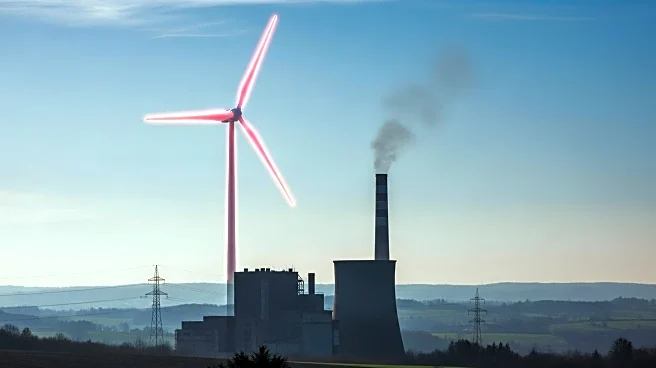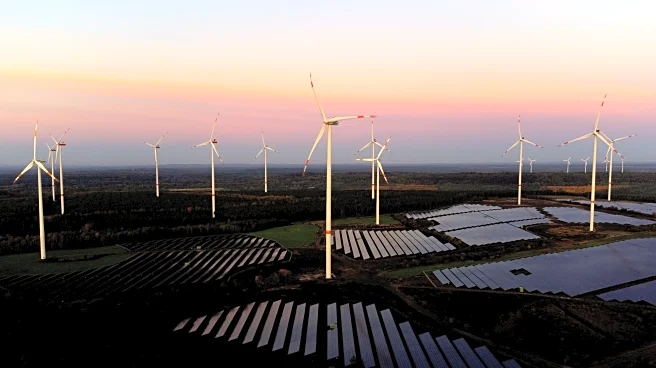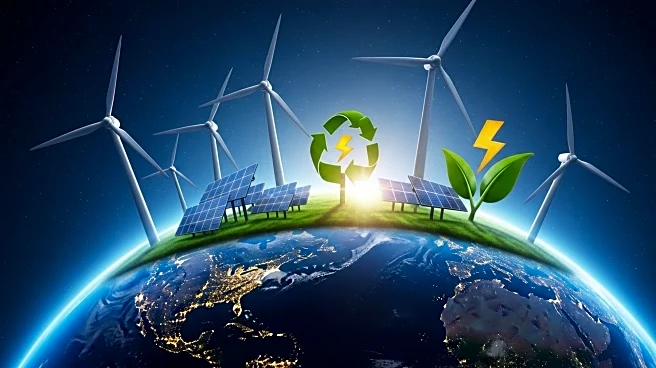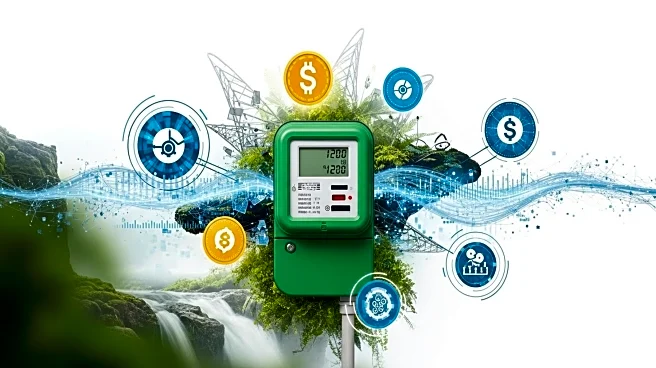What's Happening?
For the first time, renewable energy sources have generated more power than coal globally. In the first half of 2025, solar and wind energy met the majority of the increase in global electricity demand, leading to a decline in coal and gas generation. This shift marks a significant milestone in the transition to clean energy, with renewables supplying 5,072 terawatt-hours of electricity compared to coal's 4,896 terawatt-hours. The analysis by energy think tank Ember highlights the growing capacity of solar and wind to meet rising electricity demands.
Why It's Important?
This development signifies a crucial turning point in the global energy landscape, as renewable energy begins to outpace fossil fuels. The transition to clean energy is essential for reducing carbon emissions and combating climate change. The shift also presents economic opportunities, as the cost of renewable technologies continues to fall, making them more accessible and competitive. This change benefits the environment and public health by reducing reliance on polluting fossil fuels.
What's Next?
To sustain this progress, the deployment of solar, wind, and battery storage needs to accelerate. Governments and industries are encouraged to increase investments in clean energy infrastructure to ensure reliable and affordable power. As technology costs decrease, there is a growing opportunity to expand renewable energy access globally. The continued growth of renewables could lead to a permanent decline in fossil fuel use, reshaping the global energy market.
Beyond the Headlines
The transition to renewable energy is not uniform across the globe. While countries like China and India are leading in clean energy adoption, others, such as the US and EU, still rely on fossil fuels due to varying demand and renewable capacity. This uneven progress highlights the need for tailored strategies to support the global shift towards sustainable energy.












